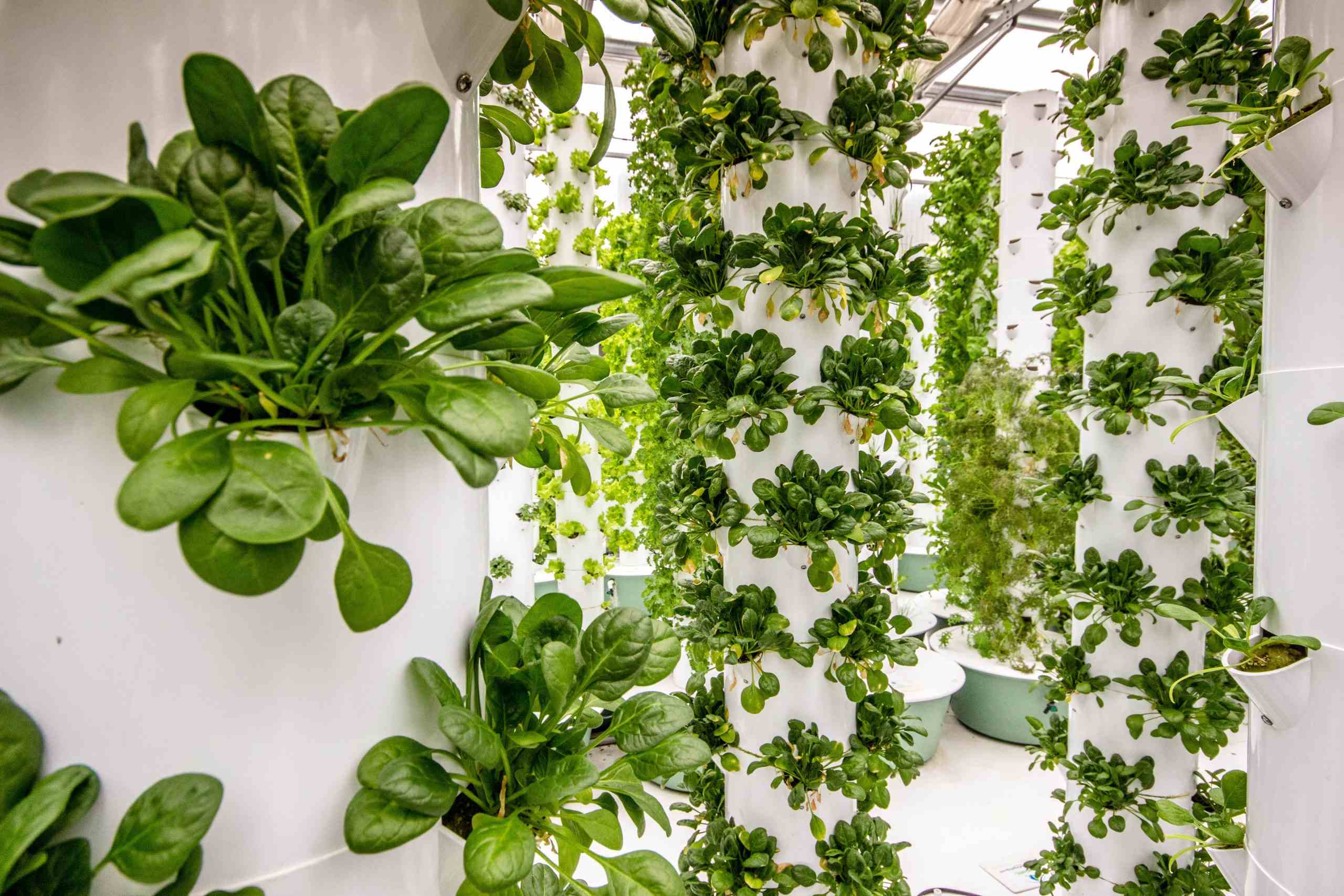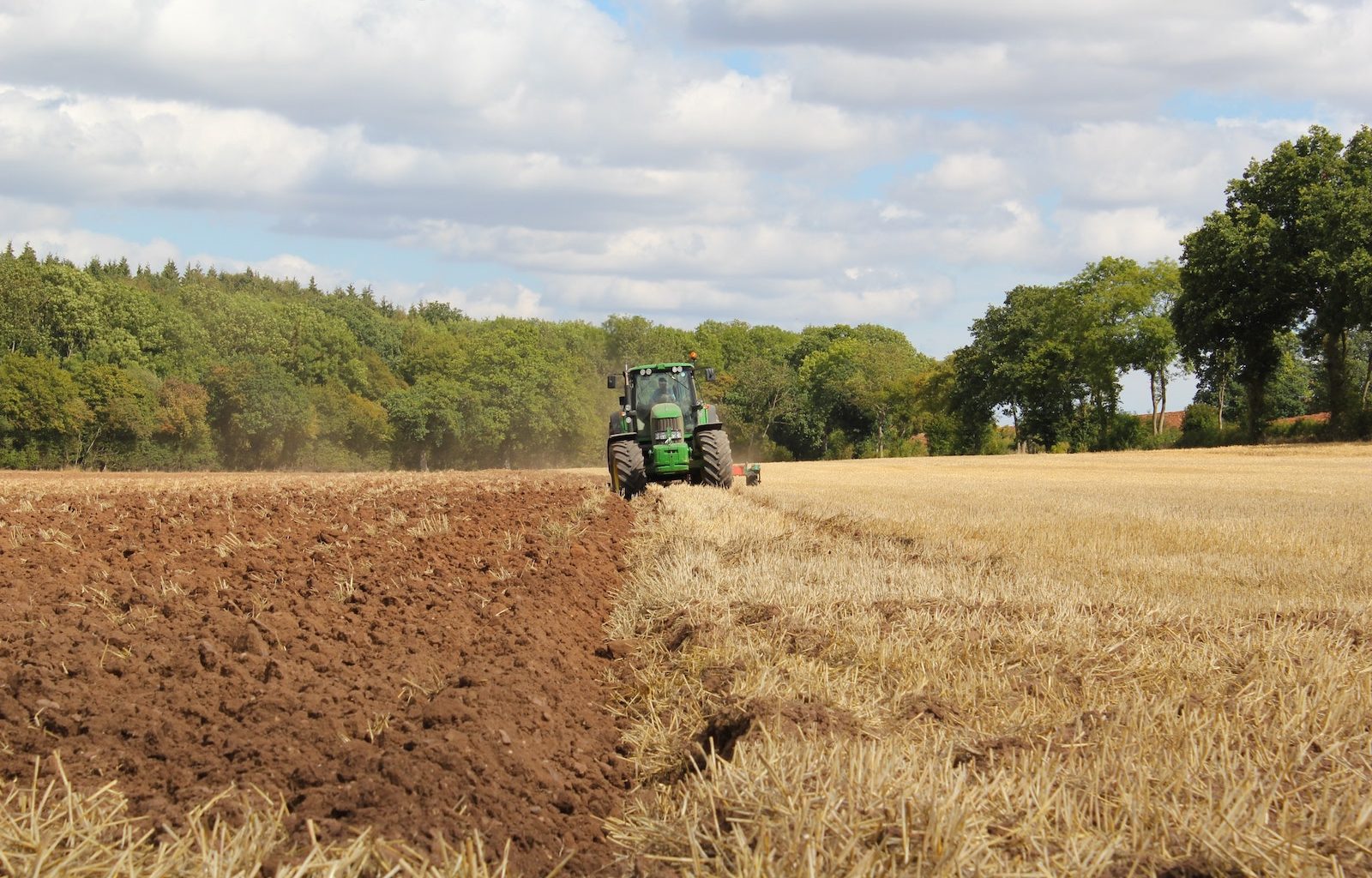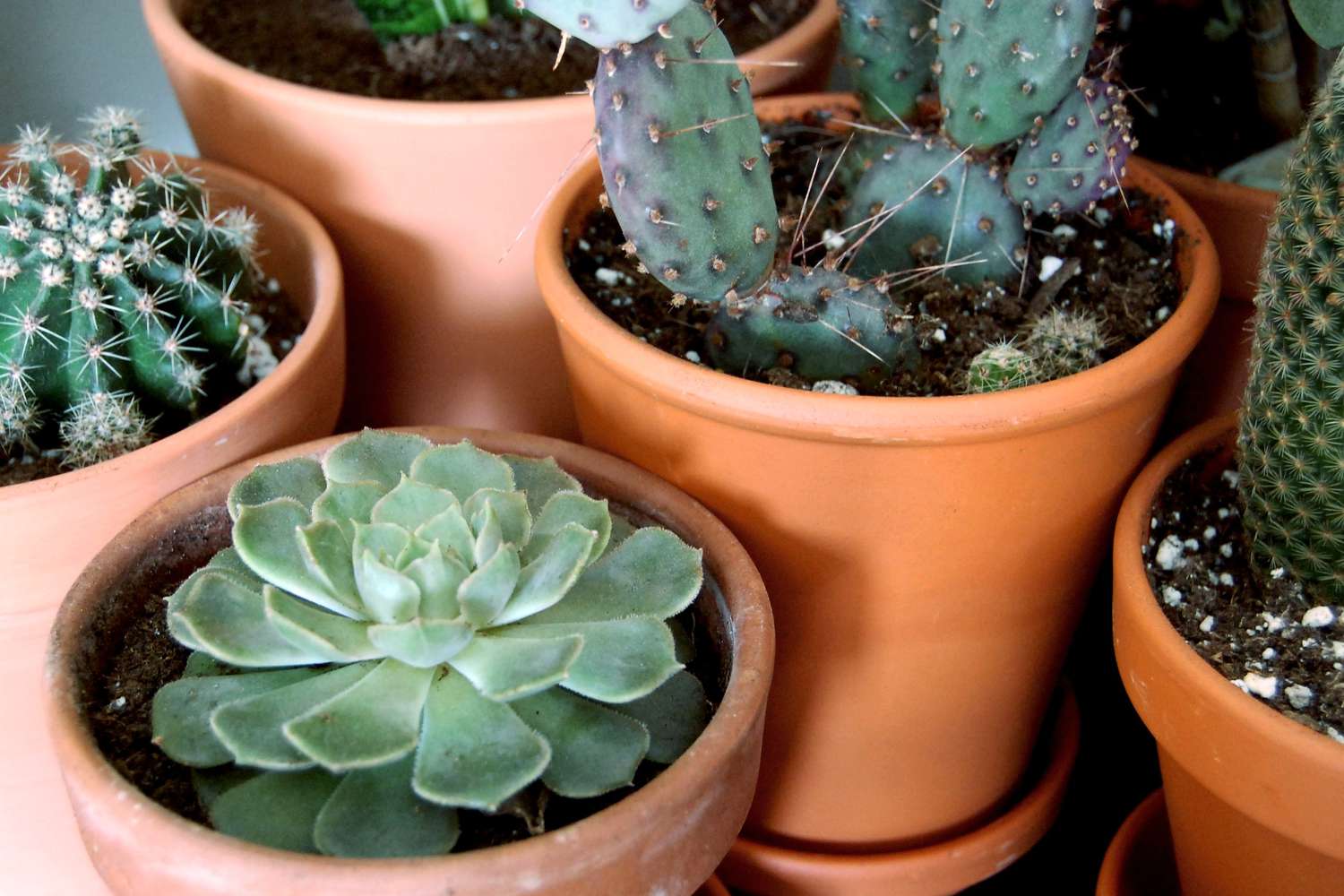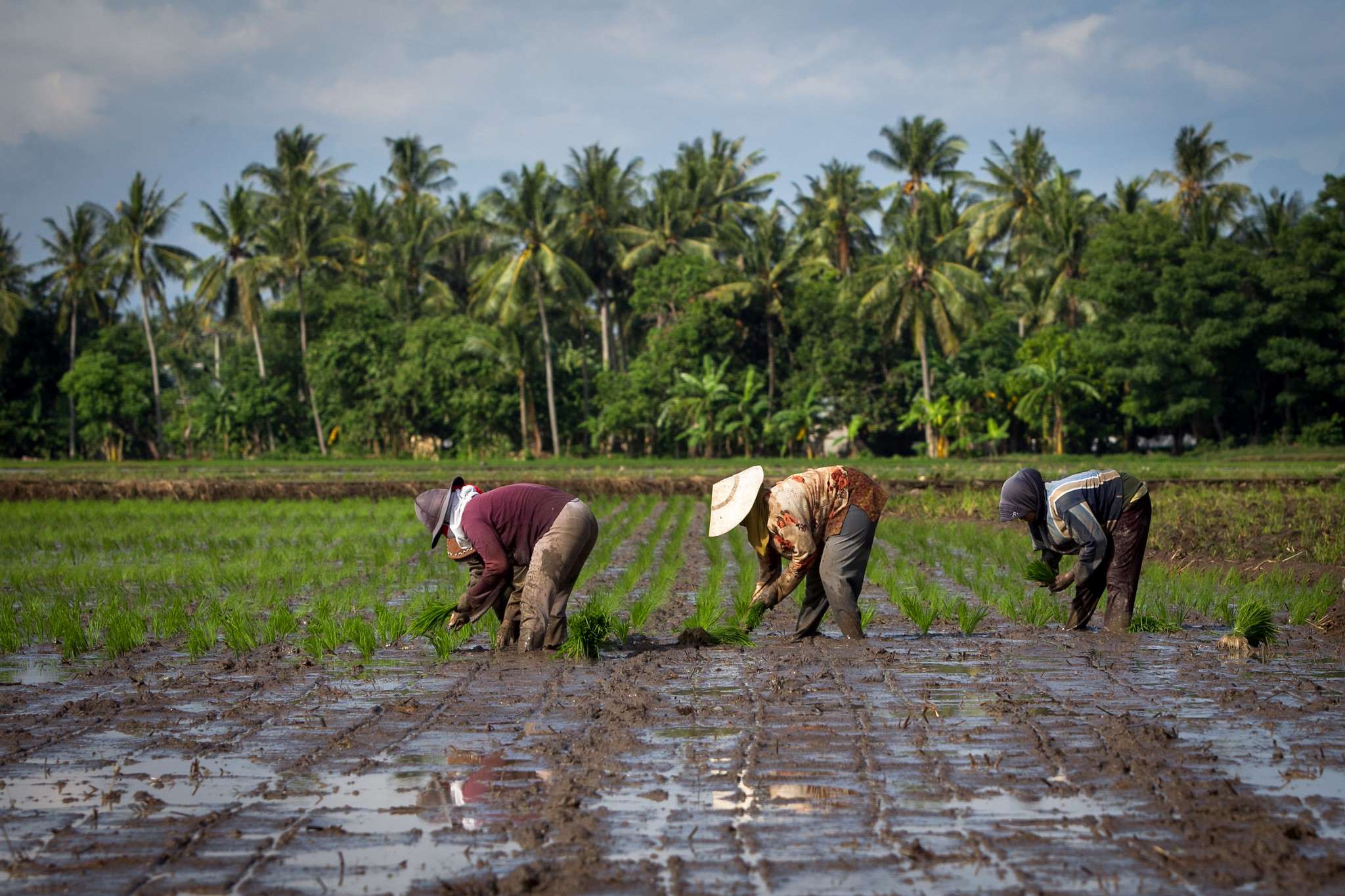Home>Gardening Basics>Understanding Soil>What Is The Difference Between Topsoil And Fill Dirt


Understanding Soil
What Is The Difference Between Topsoil And Fill Dirt
Modified: February 10, 2024
Looking to understand soil? Learn the difference between topsoil and fill dirt and how they affect your gardening and landscaping projects.
(Many of the links in this article redirect to a specific reviewed product. Your purchase of these products through affiliate links helps to generate commission for Chicagolandgardening.com, at no extra cost. Learn more)
Table of Contents
- Introduction
- Definition of Topsoil
- Definition of Fill Dirt
- Composition and Characteristics of Topsoil
- Composition and Characteristics of Fill Dirt
- Uses of Topsoil
- Uses of Fill Dirt
- Environmental Impacts of Using Topsoil
- Environmental Impacts of Using Fill Dirt
- Cost Comparison of Topsoil and Fill Dirt
- Conclusion
Introduction
When it comes to understanding soil, two common terms that often come up are “topsoil” and “fill dirt.” While they both have a role to play in various applications, it’s important to differentiate between the two to ensure you’re using the right material for your needs.
Topsoil refers to the uppermost layer of soil on the Earth’s surface. It is the layer that supports plant growth and is rich in nutrients, organic matter, and microbial life. On the other hand, fill dirt is the soil material used to fill holes, create embankments, or level surfaces. It is typically excavated from construction sites, roadways, or other locations.
Understanding the composition, characteristics, uses, and environmental impacts of both topsoil and fill dirt is crucial in making informed decisions. This article will delve deeper into these aspects to help you gain a comprehensive understanding of the differences between topsoil and fill dirt.
Definition of Topsoil
Topsoil refers to the uppermost layer of soil on the Earth’s surface. It is the layer that is home to a wide range of organisms, including plants, insects, bacteria, and fungi. This layer is typically made up of a combination of mineral particles, organic matter, water, and air.
The mineral particles in topsoil can vary in size and composition, depending on the location and geological factors. It usually consists of a mixture of sand, silt, and clay. The ratio of these particles determines the soil’s texture, which can range from sandy to loamy to clayey.
What sets topsoil apart from other soil layers is its high concentration of organic matter. This organic matter is derived from decomposing plant and animal material, and it plays a vital role in providing essential nutrients to plants. It also helps improve the soil’s structure, water-holding capacity, and drainage.
In addition to organic matter, topsoil is also teeming with microbial life. Bacteria, fungi, and other microorganisms contribute to nutrient cycling and aid in the decomposition of organic matter, making nutrients more readily available to plants.
Topsoil is incredibly valuable for gardening, landscaping, and agricultural purposes. Its nutrient-rich composition makes it an ideal medium for plant growth. Whether you’re growing vegetables, flowers, or ornamental plants, topsoil provides the necessary support and nutrients for healthy plant development.
It’s important to note that topsoil is not a uniform substance. Its composition can vary based on factors such as location, climate, vegetation, and human activity. Therefore, it’s crucial to assess the quality and characteristics of topsoil before using it in any application.
Definition of Fill Dirt
Fill dirt, also known as fill soil or simply fill, is a type of soil material that is used to fill holes, level surfaces, or create embankments. Unlike topsoil, fill dirt is not specifically designed to support plant growth. Instead, it is predominantly used for construction and landscaping projects where stability and compaction are the main objectives.
Fill dirt is typically sourced from construction sites, excavation projects, or areas where the natural soil has been modified or removed. It is often made up of a mixture of soil, rock fragments, sand, clay, and other materials. The composition of fill dirt can vary depending on the source, with different levels of compaction, moisture content, and organic matter.
One important distinction between topsoil and fill dirt is the absence of organic matter in fill dirt. Organic matter, which provides nutrients and supports microbial activity, is generally not present in fill dirt as it is primarily used for non-vegetative purposes.
While fill dirt may not possess the same fertility as topsoil, it has its own unique characteristics that make it suitable for certain applications. The composition, density, and compaction of fill dirt can be altered to meet specific project requirements, ensuring stability and structural support for buildings, roads, and landscapes.
Fill dirt is commonly used in situations where elevation adjustments are needed, such as filling in low-lying areas, creating building pads, or leveling uneven terrain. It can also serve as a base material for paved surfaces and construction projects that require strong foundations.
It’s important to note that the quality and suitability of fill dirt can vary depending on its source. Factors such as contamination, compaction, and drainage capabilities need to be considered when selecting fill dirt for a specific project. Consulting with a professional or conducting soil testing can help ensure that the fill dirt meets the necessary requirements.
Composition and Characteristics of Topsoil
Topsoil is a complex mixture of various components that contribute to its fertility and ability to support plant growth. The composition and characteristics of topsoil can vary depending on factors such as climate, geological conditions, and human activities. Here are some key components and characteristics of topsoil:
- Mineral Particles: Topsoil consists of different-sized mineral particles, including sand, silt, and clay. The proportions of these particles determine the soil’s texture. Sandy soil has larger particles and drains water more quickly, while clayey soil has smaller particles and retains water more effectively.
- Organic Matter: One of the defining features of topsoil is its high organic matter content. Organic matter comes from the decomposition of plant and animal material and plays a crucial role in soil fertility. It provides nutrients to plants, improves soil structure, enhances moisture retention, and promotes beneficial microbial activity.
- Microbial Life: Topsoil is teeming with microbial life, including bacteria, fungi, and other microorganisms. These organisms break down organic matter, release nutrients, and contribute to the overall health and fertility of the soil. They also help suppress harmful pathogens and pests, enhancing plant growth.
- Air and Water: Topsoil contains pore spaces that allow for the movement of air and water. Adequate oxygen supply is crucial for root respiration, while water is essential for plant hydration and nutrient uptake. The soil’s texture and structure influence its drainage capabilities and water-holding capacity.
- Nutrient Content: Topsoil is rich in essential plant nutrients such as nitrogen, phosphorus, potassium, and various micronutrients. These nutrients are derived from organic matter decomposition, weathering of rocks, and biological processes. The availability of nutrients is influenced by factors such as pH, soil texture, and microbial activity.
The characteristics of topsoil may vary depending on its location and history. Factors such as pH level, fertility, and organic matter content can be influenced by natural processes, land management practices, and human activities. Understanding the composition and characteristics of topsoil is crucial for determining its suitability for different applications, such as gardening, landscaping, and agricultural practices.
Composition and Characteristics of Fill Dirt
Fill dirt, unlike topsoil, is primarily used for construction and landscaping purposes rather than supporting plant growth. Its composition and characteristics vary depending on the source and intended application. Here are some key aspects of the composition and characteristics of fill dirt:
- Soil and Rock Fragments: Fill dirt typically consists of soil particles and rock fragments. It may contain a mixture of sand, silt, clay, and other mineral components. The composition can vary depending on the source, with different ratios of soil to rock materials.
- Expansion Potential: Fill dirt may have the potential to expand when exposed to moisture. This expansion can create stability issues if not properly accounted for, particularly in areas prone to high levels of precipitation or water saturation.
- Drainage and Compaction: Fill dirt is often compacted to increase its density and stability. The compaction process removes air pockets, reducing the soil’s porosity and improving its load-bearing capacity. However, overcompaction can affect drainage and water movement, leading to potential issues with water accumulation and poor soil health.
- Organic Matter Content: Unlike topsoil, fill dirt generally has a lower organic matter content. Organic matter, which is vital for nutrient retention and supporting microbial life, is not a primary consideration when using fill dirt. Instead, its focus is on stability and structural support.
- Particle Size Distribution: The particle size distribution in fill dirt can vary depending on its origin. It can range from coarse particles to fine particles, affecting factors such as drainage capability and compaction characteristics.
- Contamination Risk: When using fill dirt, there is a potential risk of contamination. It is crucial to assess the source and history of the fill dirt to ensure it does not contain hazardous substances or pollutants that could impact human health or the environment.
The composition and characteristics of fill dirt can be modified and engineered to meet specific project requirements. Testing and analysis of the fill dirt can ensure that it meets the necessary compaction, stability, and engineering standards for the intended application.
It’s important to note that fill dirt should be used appropriately for its intended purpose and may not be suitable for creating fertile and nutrient-rich environments for plant growth. If vegetation is desired, incorporating topsoil or other soil amendments may be necessary to provide the necessary nutrients and organic matter.
Uses of Topsoil
Topsoil plays a crucial role in various applications, ranging from horticulture to landscaping to agricultural practices. Its nutrient-rich composition and ability to support plant growth make it highly valuable. Here are some common uses of topsoil:
- Gardening: Topsoil is widely used in gardening to create healthy growing environments for plants. Whether planting vegetables, flowers, or ornamental plants, incorporating topsoil provides the necessary nutrients, moisture retention, and a favorable structure for root development.
- Landscaping and Turf Establishment: Topsoil is essential in landscaping projects, such as creating new lawns or improving existing ones. It provides a fertile foundation for sod installation or seeding, ensuring healthy and vibrant turf. Topsoil can also be used to level uneven areas and enhance the aesthetic appeal of landscapes.
- Soil Restoration: In areas where the existing soil is depleted or contaminated, topsoil can be used to restore the soil’s fertility and structure. It helps rejuvenate the soil, reintroducing vital nutrients and organic matter necessary for healthy plant growth.
- Amending Poor Soil: Topsoil can be used to amend poor-quality soil by incorporating it into the existing soil. This practice helps improve drainage, enhance nutrient content, and promote healthier root development.
- Vegetable and Flower Gardens: Topsoil is crucial in creating productive vegetable and flower gardens. The fertile composition of topsoil provides the necessary nutrients, organic matter, and moisture retention for optimal plant growth and production.
- Tree and Shrub Planting: Topsoil is used in the planting of trees and shrubs to provide a nutrient-rich environment for the plant’s roots to establish and thrive. It helps improve water retention around the root zone and supports healthy growth.
When it comes to utilizing topsoil, it’s important to consider the specific needs of the plants and the desired outcome. Assessing the quality of the topsoil and ensuring it is free from contaminants is crucial for successful application in various projects.
Uses of Fill Dirt
Fill dirt serves a variety of purposes in construction and landscaping projects where stability and compaction are essential. While it does not support plant growth like topsoil, fill dirt has several practical applications. Here are some common uses of fill dirt:
- Foundation Support: Fill dirt is commonly used as a base material to provide a firm foundation for building structures. It helps to level the ground and provide stability, ensuring the structural integrity of buildings, roads, and other infrastructure.
- Land Grading and Leveling: Fill dirt is instrumental in grading and leveling uneven areas of land. It can fill depressions and contours, creating a more uniform surface for construction projects or landscaping purposes.
- Embankment Construction: Fill dirt is utilized to build embankments for various purposes, such as preventing erosion, creating barriers, or modifying the landscape. It provides the necessary base and stability for these embankment structures.
- Retaining Walls: Fill dirt is commonly used in the construction of retaining walls. These walls hold back soil or prevent the erosion of sloping areas, and fill dirt provides the material needed to build the supporting structure.
- Backfilling: Fill dirt is used to backfill excavated areas, such as utility trenches or foundations. It helps fill the voids left after excavation and ensures proper compaction for stability and support.
- Road Construction: Fill dirt is a vital component in road construction projects. It is used to create embankments, improve road drainage, and provide a solid base for paving materials.
- Landscaping and Topography Modification: Fill dirt can be used to modify the topography of a landscape, creating raised beds, mounds, or terraces. With proper compaction, it helps shape the land and enhance the aesthetics of outdoor spaces.
When using fill dirt, it is important to consider factors such as compaction, stability, and drainage requirements specific to the project at hand. Consulting with a professional or conducting soil testing can ensure that the fill dirt meets the necessary standards and is suitable for the intended use.
Environmental Impacts of Using Topsoil
The use of topsoil can have both positive and negative environmental impacts depending on how it is managed and utilized. Here are some key considerations regarding the environmental impacts of using topsoil:
- Soil Erosion: Improper management of topsoil can lead to soil erosion, which can have detrimental effects on the environment. When topsoil is exposed and not protected by vegetation or erosion control measures, wind and water can carry it away, causing loss of fertile soil and potential pollution of water bodies.
- Habitat Destruction: Extraction of topsoil from natural areas or extensive land grading for construction projects can lead to the destruction of habitats for plants and animals. This loss of biodiversity can impact ecosystem health and disrupt ecological balances.
- Water Quality Impacts: Runoff from areas where topsoil has been disturbed or improperly managed can result in sedimentation and nutrient runoff into water bodies. Excessive sedimentation can harm aquatic life, while nutrient runoff can lead to eutrophication and water quality degradation.
- Loss of Soil Quality: Repeated and extensive use of topsoil without proper replenishment or management practices can result in the degradation of soil quality over time. Soil compaction, nutrient depletion, and loss of organic matter can occur, impacting its fertility and ability to support healthy plant growth.
- Carbon Footprint: The transportation and use of topsoil for large-scale projects can contribute to carbon emissions, particularly when the topsoil needs to be transported over long distances. Minimizing the carbon footprint associated with topsoil use can be achieved by sourcing locally or implementing sustainable soil management practices.
- Sustainable Solutions: To mitigate the environmental impacts of using topsoil, several sustainable solutions can be implemented. These include practicing erosion control techniques, using proper site grading and drainage measures, implementing appropriate soil conservation methods, and promoting soil health through organic matter additions and crop rotation.
Understanding the potential environmental impacts of using topsoil is essential in order to employ responsible and sustainable practices. By implementing proper soil management techniques and conservation measures, the negative effects can be minimized, and the long-term health and resilience of the environment can be preserved.
Environmental Impacts of Using Fill Dirt
The use of fill dirt can have various environmental impacts, both positive and negative, depending on how it is sourced, managed, and utilized. Here are some important considerations regarding the environmental impacts of using fill dirt:
- Habitat Disturbance: The extraction of fill dirt can result in habitat destruction and disruption of natural ecosystems. Excavation activities may lead to the removal of vegetation, altering the habitat for plants and animals and potentially causing wildlife displacement.
- Soil Compaction and Drainage: Improper compaction or inadequate drainage of fill dirt can negatively impact soil health and natural drainage patterns. Inefficient drainage can lead to waterlogged conditions and increased erosion potential, while overcompaction can restrict the movement of air and water within the soil, affecting root growth and nutrient cycling.
- Sedimentation and Water Quality: Improper management of fill dirt can result in sedimentation and soil runoff into nearby water bodies. Increased sedimentation can suffocate aquatic habitats, impair water quality, and negatively impact aquatic species and ecosystems.
- Contamination Risks: Fill dirt from certain sources may carry contaminants such as heavy metals, chemicals, or pollutants. When used inappropriately or without proper assessment, these contaminants can leach into surrounding soils and water bodies, posing risks to both human health and the environment.
- Carbon Footprint: The transportation of fill dirt, especially over long distances, contributes to carbon emissions and the overall carbon footprint associated with construction and landscaping projects. Reducing the carbon footprint can be achieved by sourcing fill dirt locally or considering alternative materials or construction techniques.
- Site Rehabilitation: Proper site rehabilitation after the use of fill dirt is essential to mitigate environmental impacts. Implementing erosion control measures, re-vegetation using native species, and establishing proper drainage systems can help restore the site and reduce potential erosion and sedimentation issues.
It is important to carefully assess the source of fill dirt and implement responsible management practices to minimize its negative environmental impacts. This includes choosing reputable sources, properly managing soil compaction and drainage, implementing erosion control measures, and conducting appropriate testing to ensure the fill dirt is free from contaminants.
By prioritizing environmentally sound practices when utilizing fill dirt, it is possible to minimize disturbances to natural ecosystems, protect water quality, and promote the long-term health and sustainability of the environment.
Cost Comparison of Topsoil and Fill Dirt
When considering the cost of topsoil and fill dirt, several factors come into play, including the quality, source, quantity needed, and geographic location. Here is a breakdown of the cost comparison between topsoil and fill dirt:
- Topsoil: The cost of topsoil can vary depending on its quality and source. Typically, higher-quality screened and organic-rich topsoil will be more expensive than lower-quality alternatives. Additionally, factors such as transportation costs, delivery fees, or local availability can influence the overall cost. On average, topsoil can range from $20 to $60 per cubic yard.
- Fill Dirt: Fill dirt tends to be less expensive compared to topsoil, primarily because it does not require the same level of fertility or organic matter content. Fill dirt is often sourced from construction sites or excavation projects, which makes it more readily available and less costly. The cost of fill dirt can range from $5 to $20 per cubic yard.
- Additional Costs: It’s important to note that additional costs may be incurred when using topsoil or fill dirt. These costs might include transportation or delivery fees, labor costs for spreading and grading, and any amendments or soil treatments required to optimize the soil for specific applications.
- Quantity Needed: The quantity of topsoil or fill dirt required for a project will impact the overall cost. Larger projects will naturally require more material, increasing the total expenses. It’s important to accurately estimate the quantity needed to avoid unnecessary costs or shortages.
- Geographic Location: Prices for topsoil and fill dirt can vary depending on the geographic location. Factors such as availability of material, distance to the source, and local market conditions can influence the cost. It’s advisable to compare prices from different suppliers in your area to ensure competitive pricing.
Ultimately, the cost difference between topsoil and fill dirt reflects the differences in their composition, fertility, and intended use. While fill dirt is generally more affordable, it may not offer the same level of nutrient content or organic matter as topsoil. The choice between topsoil and fill dirt depends on the specific needs of the project, budget constraints, and the desired outcome.
When considering the cost, it is essential to also consider the quality and long-term benefits of using topsoil or fill dirt. Investing in higher-quality topsoil may yield better results in terms of plant growth and overall soil health. Consulting with professionals or experts in the field can help in making an informed decision regarding the most cost-effective and suitable soil option for your specific project.
Conclusion
Understanding the difference between topsoil and fill dirt is crucial for making informed decisions when it comes to various applications, such as gardening, landscaping, and construction. Topsoil, with its nutrient-rich composition and ability to support plant growth, is ideal for creating fertile environments and promoting healthy vegetation. Fill dirt, on the other hand, is primarily used for stability and structural support in construction and landscaping projects where plant growth is not the primary focus.
Topsoil consists of a mixture of mineral particles, organic matter, and beneficial microbial life, making it a valuable resource for gardening, horticulture, and agricultural practices. Its composition and characteristics vary depending on factors such as location, climate, and vegetation. Fill dirt, on the other hand, is composed of soil particles, rock fragments, and other materials, and it is primarily used for filling holes, leveling surfaces, and creating embankments.
Both topsoil and fill dirt have potential environmental impacts that need to be considered. Improper management or misuse of these materials can lead to issues such as erosion, habitat destruction, and water contamination. It’s important to implement responsible practices, such as erosion control measures, proper drainage systems, and site rehabilitation, to minimize these negative impacts.
When it comes to cost, topsoil is generally more expensive than fill dirt due to its higher quality and nutrient content. However, the cost can vary based on factors such as source, quantity needed, and geographic location. It is important to compare prices and consider the specific requirements of the project when making a cost-effective decision.
In conclusion, understanding the differences and uses of topsoil and fill dirt is essential for maximizing their benefits while minimizing environmental impacts. Whether you are creating a garden, landscaping your backyard, or working on a construction project, choosing the right soil material will contribute to the success and sustainability of the endeavor.









